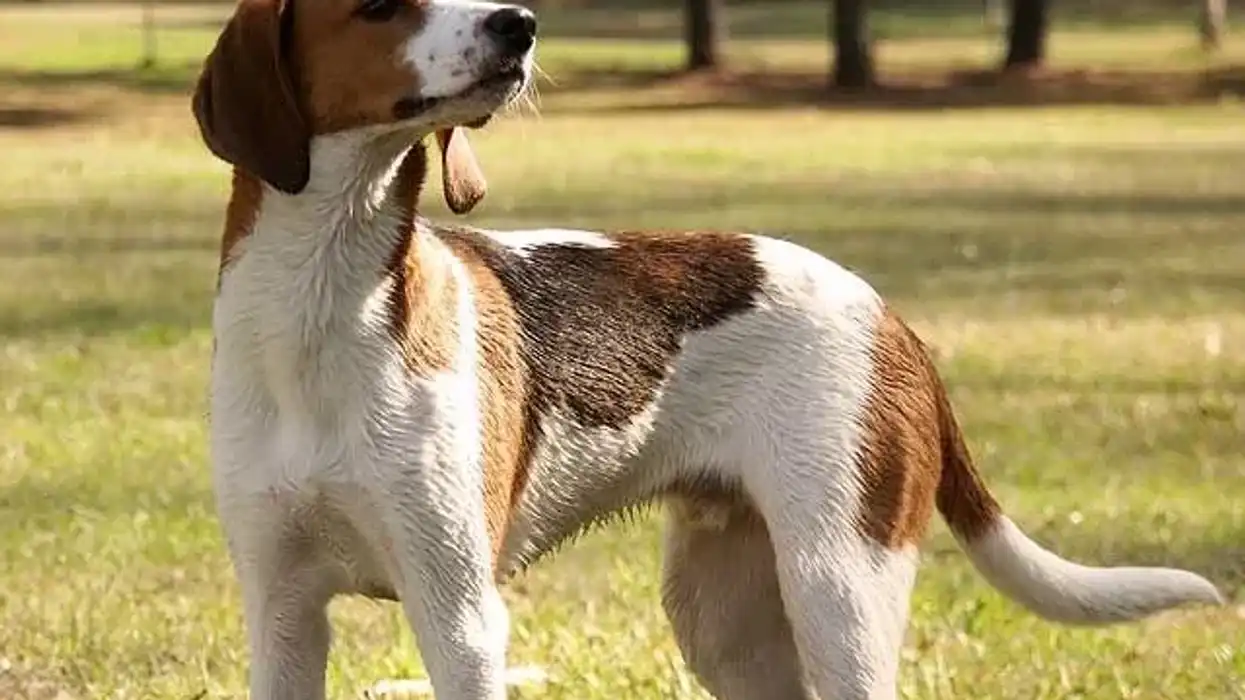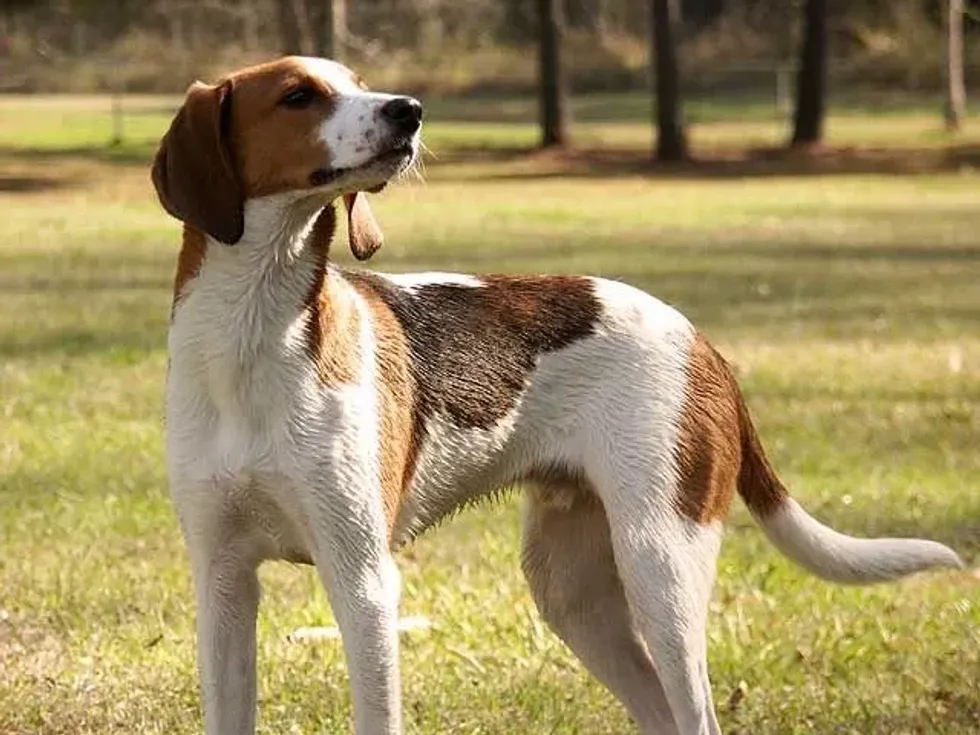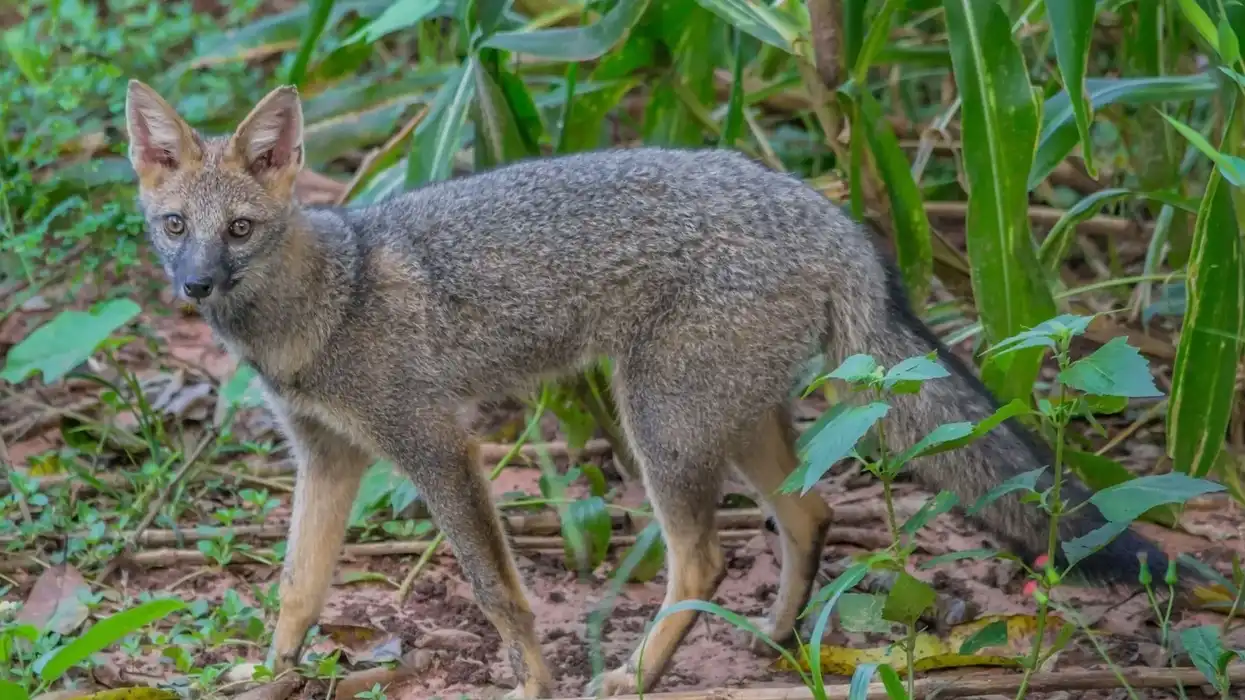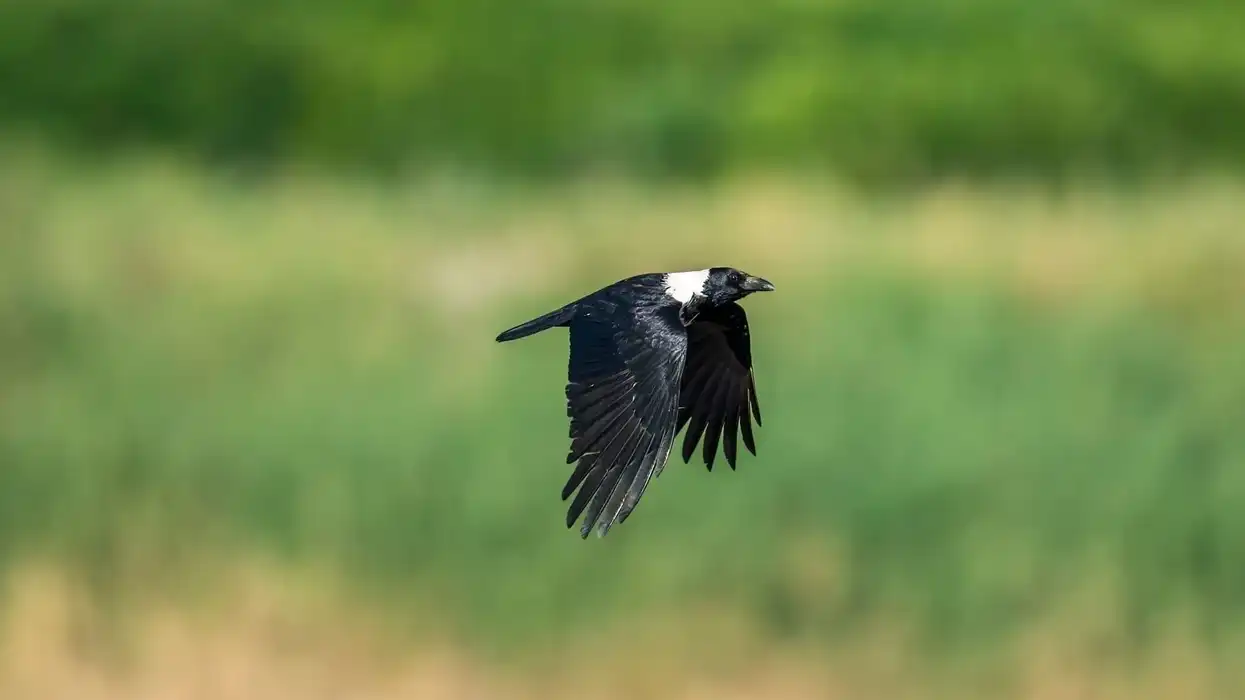Fun Treeing Walker Coonhound Facts For Kids

Content
- What type of animal is a Treeing Walker Coonhound?
- What class of animal does a Treeing Walker Coonhound belong to?
- How many Treeing Walker Coonhounds are there in the world?
- Where does a Treeing Walker Coonhound live?
- What is a Treeing Walker Coonhound's habitat?
- Who do Treeing Walker Coonhounds live with?
- How long does a Treeing Walker Coonhound live?
- How do they reproduce?
- What is their conservation status?
- What do Treeing Walker Coonhounds look like?
- How cute are they?
- How do they communicate?
- How big is a Treeing Walker Coonhound?
- How fast can a Treeing Walker Coonhound run?
- How much does a Treeing Walker Coonhound weigh?
- What are the male and female names of the species?
- What would you call a baby Treeing Walker Coonhound?
- What do they eat?
- Are they slobbery?
- Would they make a good pet?
- Did you know...
- Characteristics And Health Issues
- Getting Your Own Treeing Walker Coonhound
If you are looking for strong hunting dogs that can double down as lovely family dogs, then treeing walker coonhounds are the perfect dog for you. These dogs were bred first in the 1800s when a tan and black dog named Tennessee Lead of unknown breed origin was crossed with the walker hound.
Now, you might wonder why this dog has such a long and weird name.
This can be traced to the history of this dog. The treeing part of the name comes from these being treeing dogs, meaning that they chased game up into trees.
The walker part comes from their walker-hound parent. Last but not least, coonhounds are dogs that are known to track prey through their acute sense of smell and scent.
This breed of dog had officially been recognized by the United Kennel Club (UKC) in 1905, while membership from the American Kennel Club was confirmed in 2012.
So, read on for more information regarding treeing walker coonhounds. If you are looking for more dog facts, take a look at the mini labradoodle and the French Brittany.
Treeing Walker Coonhound Interesting Facts
What type of animal is a Treeing Walker Coonhound?
The treeing walker coonhound is a medium to large dog that belongs to the breed of hounds. These are hunting dogs that are generally suitable for life outdoors.
This dog has often been referred to as the 'people's choice' within the hound group. These dogs are known for their high energy levels and friendliness. They were recognized by the American Kennel Club (AKC) as part of the hound group of dogs in 2012 and were the last among the coonhounds to gain this recognition from the AKC.
What class of animal does a Treeing Walker Coonhound belong to?
The treeing walker coonhound is a hound dog that belongs to the class of Mammalia or mammals. Like all dog breeds, the scientific name of the treeing walker coonhound is Canis lupus familiaris in the genus of Canis.
How many Treeing Walker Coonhounds are there in the world?
Like most dog breeds, the actual population of the treeing walker coonhound cannot be estimated. While this dog breed is not very rare, the popularity of these dogs isn't off the chart as well.
However, they are popular amongst hunters as a pet due to their high energy and their love for the outdoors. The American Kennel Club (AKC) ranks the treeing walker coonhound as their 137th most popular dog breed amongst 197 total dog breeds.
Where does a Treeing Walker Coonhound live?
Despite being part of the hound group of dogs, treeing walker coonhounds are not found in the wild. This is true for all dogs that are not bred through breeders.
They are hardly ever seen as stray dogs. This breed of dog is bred by specialized breeders. This is because the treeing walker coonhound is a pure-bred dog breed.
Once sold by the breeder, the treeing walker coonhound lives in the house of the owner with their family. However, we will not recommend this dog breed for life in an apartment. Owing to its energy and exercise needs, the treeing walker coonhound is often restricted by life inside an apartment.
It is much more suitable for a farm or country life. In urban areas, if you are indeed keeping the treeing walker coonhound, you must have a house with a long yard where they can play and exercise.
What is a Treeing Walker Coonhound's habitat?
As we mentioned before, this dog breed is best known for its prowess in hunting. Yet, they have not earned the popular moniker of 'people's choice' amongst the hound breeds just because of their hunting skills.
These dogs, like their parent breed, the English foxhound, are very friendly and sociable. They are eager to please and their trainability is very high.
Being treeing dogs, they almost always want to be outdoors. They are known to run and bark after prey and chase them up trees so that their owners or hunters can arrive to shoot the game.
However, they are always in need of exercise and may grow unhappy or stressed when there is no exercise. This may adversely affect the health of the dog. This dog breed is also known for its endurance and stamina.
Due to these abilities, they make for great hiking partners. They are also always ready to go on a run, so be prepared for daily training and running if you are buying this dog.
The treeing walker coonhound's energy level is off the charts. However, since this is one of the breeds with a higher prey drive, you should always put a leash on your treeing walker coonhound.
Who do Treeing Walker Coonhounds live with?
Like all domesticated dog breeds, treeing walker coonhounds do not live in packs. They are always found either with a breeder or in the house of their owner.
Leaving them alone could be a bad idea as these dogs are highly sensitive and might develop separation anxiety. This may lead to the dog being violent and destructive and this, in turn, will hinder their health.
On a positive note, this dog breed's friendliness and even-tempered nature make them easy to exist with other dogs in the house. Despite their hunting habits, they may become compatible with smaller pets like cats with the proper training and grooming.
However, we would recommend not keeping smaller pets like hamsters with Treeing Walker Coonhounds. This breed of dog is also known to get along very well with children.
How long does a Treeing Walker Coonhound live?
Genetically blessed with good health, this black, brown, and white-colored dog can lead a long life. Like their parent dog breeds the English foxhound, these dogs almost always live past the age of ten years.
The average age of the treeing walker coonhound dog breed has been observed to be around 12 to 13 years. However, health problems like hip dysplasia can affect the longevity of this pure-bred dog.
How do they reproduce?
Not much first-hand information is available regarding the breeding and mating process of these hound dogs. However, it can be safe to say that these dogs do not have any problems when it comes to giving birth.
Like most breeds of dogs, a puppy of this dog breed can be assumed to reach sexual maturity between the ages of six and 12 months. However, this may vary even within a breed group due to differences in height, weight, and development.
Dogs usually reproduce through a process called the copulatory tie.
Female dogs come into heat twice a year for a period of two to three weeks and the same can be said about the treeing walker coonhound. However, we can confirm that the litter size varies between four and six treeing walker coonhound puppies.
Proper care must be taken of the puppies. Early socialization can play an important part in the training of this puppy.
What is their conservation status?
The conservation status of this dog has not yet been evaluated by any of the major organizations like the International Union For Conservation Of Nature (IUCN).
Although these dogs have been around since the 1940s, they were only registered with the American Kennel Club in 2012. This has led to a shortage of data on the popularity of the dog through the years based on the registrations of the AKC.
It must be noted that the treeing walker coonhound was found to be the 137th most popular dog out of 197 registered breeds of dogs.
Treeing Walker Coonhound Fun Facts
What do Treeing Walker Coonhounds look like?

Treeing walker coonhounds are known for their distinct physical appearance. Some have also noted that this friendly pet dog can be easily passed on as the bigger version of the Beagle breed with its long, droopy ears and the tricolored coat of black, white, and brown.
They are also very similar in appearance to their parent breed of English and American foxhounds with similarities in size and fur coat.
As per breeding standards, treeing walker coonhounds are known to have broad skulls. This dog breed has a muzzle that is long and square in shape.
Along with these, the most distinct feature that the treeing walker coonhound has is its ears. Their long, floppy ears are very similar to those of the Beagle and the foxhounds.
These ears are sometimes even long enough to touch their muzzle or nose! Their eyes are well placed on their head and they have a very gentle and pleading expression in them. The color of the eyes is known to range between black and brown.
However, a treeing walker coonhound dog having yellow eyes or other eyes is not thought to be part of the breed standard. The overall build of the dog is muscular with typical strong hound hind legs that are very useful while running.
The treeing walker coonhound coat is another important aspect. These dogs have been observed to have smooth coat that does not require a lot of grooming.
The fur is straight and medium-dense in nature. With regards to the coat color, the treeing walker coonhound comes into a combination of bi-color and tri-color. The tri-color is a combination of black, tan, and white while the bi-color can be a combination of black and white or brown or white.
How cute are they?
Owing to their floppy ears and coat color, many find the treeing walker coonhound to be very cute as a pet. Their friendliness and the energy levels of the dog which make them very social and easy to train are also factors that affect the cuteness quotient of this dog.
Apart from their cute ears, these dogs have round and pleading eyes that are often deemed to be very adorable.
A small treeing walker coonhound puppy can have a lot of cute shenanigans. There are multiple channels on YouTube, Instagram, and other social media sites that are dedicated to these dogs and show them in their element, garnering thousands of likes, views, and comments.
How do they communicate?
The treeing walker coonhound has two distinct bark types that are very unique to them. Due to these hound dogs being vintage hunting dogs by nature, the first type of bark is a uniquely distinct bay call that resembles a bugle sound.
This kind of call is used during the chasing of prey or the game.
The other bark is a call that resembles a chopping sound at a constant beat and is used by the dog during the process of treeing the game. Thus, they are frequent barkers.
Apart from these modes of communication, the treeing walker coonhound can express their emotions to their owners through various physical motions.
It will also show its annoyance or stress by biting and destroying things. Teaching and training the dog to listen to orders and wearing the leash is a communication avenue that must be established early on in the relationship between the owners and the pets.
How big is a Treeing Walker Coonhound?
The treeing walker coonhound is a medium-to-large-sized hound dog, whose height and weight are relatively higher than other dog breeds. For their height, the treeing walker coonhound stands at around 20 to 27in at the height of their shoulders.
Males are generally bigger with an average of 22 to 27in while females are slightly smaller with a height of 20 to 25in. In comparison, the big Saint Bernard dog is only a bit taller with an average height of 28in.
How fast can a Treeing Walker Coonhound run?
Due to being bred as a hunting dog, the treeing walker coonhound is supposed to be a fast and strong runner. Hounds are supposed to be fast runners and have an average speed of 30mph.
Although there is no concrete data available about the treeing walker coonhound, it is safe to say that their speed range is around 30mph.
More than being a fast runner, the treeing walker coonhound is a dog with a lot of endurance and stamina. Even after a long run or a hunting session, the energy level of this dog will not be depleted.
How much does a Treeing Walker Coonhound weigh?
The treeing walker coonhound is a breed that is healthy and loves exercise and doesn't have a tendency to become obese. However, there is a slight difference between the weight of a female and the weight of a male i.e., there exists slight sexual dimorphism.
The average weight of the treeing walker coonhound is thought to be in the range of 50 to 70lb with females sometimes weighing a bit less at 45lb.
What are the male and female names of the species?
Like all dogs, males and females of the treeing walker coonhound are known as dogs and bitches respectively.
What would you call a baby Treeing Walker Coonhound?
There is no specific name for the treeing walker coonhound puppy. They are simply known as puppies.
What do they eat?
As they are highly active dogs, they must be given a diet that is high in proteins. Nutritious dog foods would be highly recommended for them along with some meat supplements.
These would be beneficial for their health. You should always consult a vet while determining the diet for your favorite four-pawed friend. On another note, please keep in check the food treats that you give your dogs during early training.
This might lead to the dog gaining weight. What also might lead to the dog gaining weight is that during their later years, they are less likely to hunt and run and may become obese.
Are they slobbery?
The treeing walker coonhound is not a breed that is prone to drooling and being slobbery. These dogs are only found to be drooling when they are either panting or are thirsty and need water.
Would they make a good pet?
The friendliness and high energy of the treeing walker coonhounds make for them to be excellent pets for house owners. However, they are not suitable for apartment life.
These dogs have a high trainability and will often respond to their owners diligently. Apart from the trainability factor, this dog loves to exercise all the time but must be kept on a leash.
This is because, due to their nature of being hunting or game dogs, they will often chase after things. A leash will be able to control that behavior. For the treeing walker coonhound training, the best way to train them is through positive reinforcement.
The treeing walker coonhound also has great health in general and grooming them is quite easy. Grooming their coat weekly is enough because treeing walker coonhounds do not shed too much.
While grooming, the owners should also keep an eye on the dust and debris that has accumulated in their ears. These dogs are smart and intelligent, and great family dogs that can get along well with children and strangers.
Did you know...
Though there aren't many treeing walker coonhound mixes, the one treeing walker coonhound mix that stands out is the treeing walker coonhound beagle mix.
Treeing walker coonhounds are known to have a musty scent on their body.
Characteristics And Health Issues
Treeing walker coonhounds are part of the group of scent hounds. This means that they have an acute sense of smell and scent.
The treeing walker coonhound's temperament shows us this dog is very social and loves to interact with humans. They also show a lot of friendliness to the other dogs in the house. Despite being very focused during a hunting trail, they are very calm, even-headed, and mellow when they spend their time with their family at home.
Although treeing walker coonhounds are healthy dogs, there are certain common health problems that this breed suffers from. That includes the common dog problem of hip dysplasia. They can also have certain hunting injuries or ear infections. A type of nerve inflammation called coonhound paralysis is common in these dogs. Scientifically, the name of this disease is Polyradiculoneuritis.
Getting Your Own Treeing Walker Coonhound
One can often find treeing walker coonhounds from breeders around the world. Yet, these dogs can be a bit expensive.
In the United States, treeing walker coonhounds are found between the price range of USD 400-600 although some breeders may charge upwards of USD 1000. We must always recommend that you buy a pet dog from a reputable, ethical breeder.
Here at Kidadl, we have carefully created lots of interesting family-friendly animal facts for everyone to discover! Learn more about some other mammals including Australian shepherd lab mix facts or Czechoslovakian wolfdog facts.
You can even occupy yourself at home by coloring in one of our free printable Treeing Walker Coonhound coloring pages.
We Want Your Photos!
More for You
See All
Bachelor of Arts specializing in Journalism and Mass Communication, Postgraduate Diploma in Sports Management

Moumita DuttaBachelor of Arts specializing in Journalism and Mass Communication, Postgraduate Diploma in Sports Management
A content writer and editor with a passion for sports, Moumita has honed her skills in producing compelling match reports and stories about sporting heroes. She holds a degree in Journalism and Mass Communication from the Indian Institute of Social Welfare and Business Management, Calcutta University, alongside a postgraduate diploma in Sports Management.
Bachelor of Law

Abdulqudus MojeedBachelor of Law
A versatile professional with a passion for creative writing and technology. Abdulqudus is currently pursuing his Bachelor of Law from the University of Lagos and has experience as a tutor, intern assistant, and volunteer. He possesses strong organizational skills and is a detail-oriented person.
Disclaimer
1) Kidadl is independent and to make our service free to you the reader we are supported by advertising. We hope you love our recommendations for products and services! What we suggest is selected independently by the Kidadl team. If you purchase using the Buy Now button we may earn a small commission. This does not influence our choices. Prices are correct and items are available at the time the article was published but we cannot guarantee that on the time of reading. Please note that Kidadl is a participant in the Amazon Services LLC Associates Program, an affiliate advertising program designed to provide a means for sites to earn advertising fees by advertising and linking to Amazon. We also link to other websites, but are not responsible for their content.
2) At Kidadl, we strive to recommend the very best activities and events. We will always aim to give you accurate information at the date of publication - however, information does change, so it’s important you do your own research, double-check and make the decision that is right for your family. We recognise that not all activities and ideas are appropriate for all children and families or in all circumstances. Our recommended activities are based on age but these are a guide. We recommend that these ideas are used as inspiration, that ideas are undertaken with appropriate adult supervision, and that each adult uses their own discretion and knowledge of their children to consider the safety and suitability. Kidadl cannot accept liability for the execution of these ideas, and parental supervision is advised at all times, as safety is paramount. Anyone using the information provided by Kidadl does so at their own risk and we can not accept liability if things go wrong.
3) Because we are an educational resource, we have quotes and facts about a range of historical and modern figures. We do not endorse the actions of or rhetoric of all the people included in these collections, but we think they are important for growing minds to learn about under the guidance of parents or guardians.







